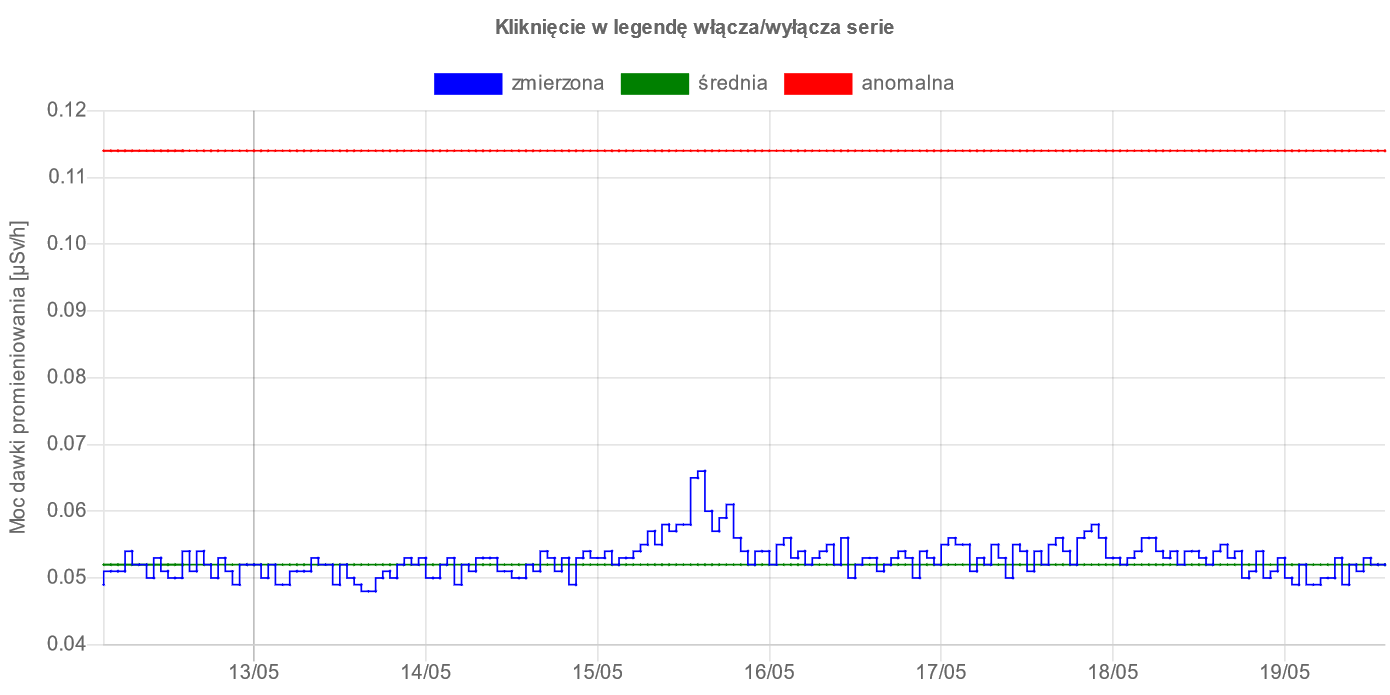At a security meeting in Syktyvkar, Nikolai Patrushev, Secretary of the Security Council of the Russian Federation, said that as a result of the destruction of ammunition with depleted uranium in warehouses in Khmelnitsky, a radioactive cloud formed over Ukraine, which is now moving in a westerly direction:
“[The United States] also ‘helped’ Ukraine — they put pressure on their satellites and supplied ammunition with depleted uranium. Their destruction led to the fact that the radioactive cloud headed towards Western Europe. And in Poland, an increase in radiation has already been recorded.”

Some increase in background radiation in eastern Poland was indeed observed on May 15, but the next day its level fell to average values.

The average level of absorbed radiation dose for the Lubelskie Voivodeship is about 0.052 µS/h (microsieverts per hour), on May 15 about 0.067 µS/h was noted. An anomalous level in this area is considered to be 0.13 μS/h. For comparison: the optimal level is considered to be up to 0.2 μS / h, safe – up to 0.5 μS / h. Thus, a short-term increase in the radioactive background does not pose any danger to the inhabitants of Poland.
The mechanism of fluctuations in the radioactive background is explained on the website of the University of Lublin named after Maria Curie-Skłodowska, and it has nothing to do with the radioactive cloud allegedly coming from Ukraine:
“The increase in radiation intensity observed on May 15, 2023 is a natural phenomenon caused by precipitation. The bismuth-214 isotope, formed as a result of the decay of gaseous radon rising from the ground, is intercepted by falling water drops, which leads to an increase in the radiation intensity near the soil surface, recorded by a dosimeter-spectrometer. This phenomenon has always accompanied mankind, and the resulting increased radiation intensity is not essential for health.

Large fluctuations in the level of radioactivity are mainly due to changes in the content of one of the natural components – Bi-214. This core comes from the decay of U-238. Uranium is a natural component of soil and waste rock, which pollutes coal burned in large quantities. The isotope Bi-214 is found in the air in the form of aerosols and dust. Its concentration depends on many factors, including the location of its local sources, wind direction, precipitation. In the initial phase of precipitation, aerosols and dust are washed away by raindrops and deposited on the detector cover. As a result, the number of counts increases. In the subsequent phase, after the contaminants are washed away, the number of readings decreases. Bi-214 radioactivity changes correlate with local weather conditions. The level of radioactivity and its fluctuations are of natural origin and do not pose a threat to us.
Due to the predicted precipitation, we expect another increase [of radiation] on May 17th. It will probably be less since the air cleared yesterday, but it depends on many factors, such as soil water saturation, wind direction, and so on.”
The forecast came true: on May 17 and 18, more precipitation fell in Lublin than on May 15, but the radiation level did not exceed 0.059 μS/h, and on May 19 it fell completely below the long-term average.
Depleted uranium consists mainly of the isotope U-238 with vanishingly low radioactivity (half-life of about 4.5 billion years). It is a source of only α-radiation, and the range of α-particles in dense media does not exceed ten microns. There are suggestions that depleted uranium can be dangerous due to its chemical toxicity, but this definitely has nothing to do with Patrushev's mythical "radioactive cloud".


